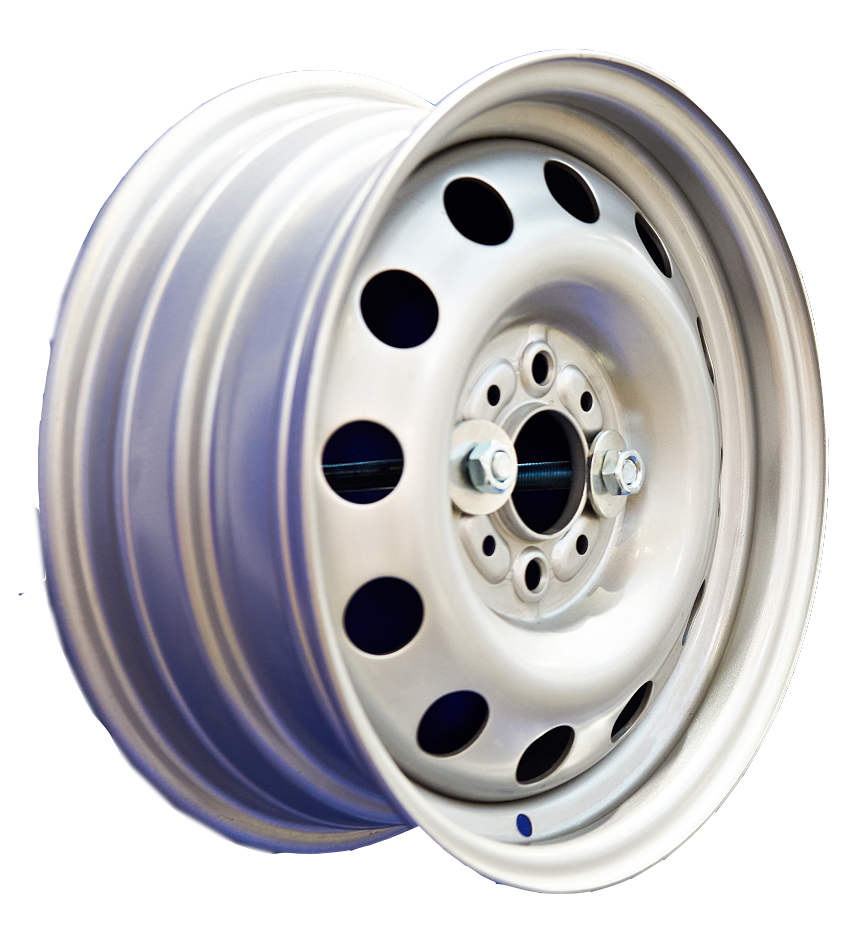پەیوەندی نێوان çelê دیزاین و کارایی ئوتومبێل یەکێکە لە گرنگترین بەڵام زۆربەی جار نەزانراوەکانی مهندیسی ئۆتۆمبێل. لەگەڵ ئۆتۆمبێلی بەکارهێنەری ڕۆژانەوە تا ئۆتۆمبێلی پێشبڕکێی بەرز، دیزاینی گردەکان گرنگییەکی بنچینەیی دەبێتە هۆی دیاریکردنی شێوازی کارکردنی ئۆتۆمبێل، گەشەکردن و وەڵامدانەوەی بۆ جیاوازی ھەناردەکان. تێکەڵەی ناوخۆیی نێوان شێواز و کارایی لە دیزاینی گردەکان دەتوانێت گۆڕانکاری دروست بکات لە هەموو شتێکەوە لە کارایی بنزینەوە تا سوکوراوەکان.
دیزاینی چەرخی نوێ بووەتە درێژتر لە ڕۆڵی بنچینەی خۆی لە دووبارەبوونەوەی شێوەی ئۆتۆمبێل و ڕاستکردنەوەی چەرخاندن. ئەمڕۆ مهندیسی چەرخی شیاو دەکاتەوە بە چەندین گۆڕاو لەوانە دابەشبوونی شێوە، کارایی ئەرۆدینامیک و جێگیری ساختەیی. ئەم ئەنجامانە کار لەگەڵ یەک دەکەن بۆ باشترکردنی کارایی گشتی ئۆتۆمبێل، کە دیزاینی چەرخ دەکاتە بیرۆکەیەکی گرنگ بۆ هەردوو ئەفسونەر و دامەزرێنەران.
هەڵبژاردنی موادەکان لە دیزاینی چەرخەکان بە شێوەیەکی زۆر سەرکەوتوو سەر ئامرازی گشتی ئوتومبێل دەسوڕێتەوە. ئالیاژە ئاسپۆشەکان وەک ئالیمینیۆم و مەگنیسیۆم بەهۆی هێزان بە کالیگەری باشەکانیانەوە زیاتر بڵاو بوونەتەوە. ئەم موادانە یارمەتی دەدەن تا جێگەی ناوازەکراو - کالیگەری بەشەکانی ناچالاکردنی لە لاپەڕەی پێستی ئوتومبێل - کەم بکەنەوە، کە دیرەنجی گشتی و بەرەوپێشچوون بە شێوەیەکی ڕاستەوخۆ دەگۆڕێت.
دیزاینی پێشکەوتووی چەرخ بەکارهێنانی ئەم موادانە دەتوانێت لە تەنهاوی چەرخ کەم بکاتەوە، کە دەگەیەنێت بە بەرەوپێشچوونی خێراتر و دیرەنجی بەرەوپێشخۆی زیاتر. کاردانەوەی کالیگەری لە ناو خودی چەرخیش ڕۆڵێکی زۆر گرنگی هەیە، و زۆربەی دیزاینە نوێیەکان تایبەتمەندی کەمکردنەوەی کالیگەری لەو شوێنانە دابووە کە کەمکردنەوەی کالیگەری بەرهەمهێنانی زۆرترین فایدەی پێشکەوتن دەبێت.
تواناکانی ساختاری چەقۆکان دەبێت هاوسەنگی لە نێوان داواکارییەکانی جیاواز بکات. شێوە و ترتیبی لاکان لە دیزاینی چەقۆکان زۆری کاریگەرییان هەیە لەسەر پتاهی ساختاری و دابەشبوونی وزە. بەکارهێنانی شیکاری کۆمپیوتەری نوێ دەبێتە هۆی ئەوەی مهندیسان ئەم ترتیبانە بۆ بەدەستهێنانی زۆرترین پتاهی و کەمترین بەکارهێنانی ماددە بههێز بکەن.
دیزاینی چەقۆکانی کارایی-ڕەخسان بەمایەنە لاکانی پشتگیریکراوی خاوەنی فشاری زۆر دەبێت و ماددەکان لە ناوچە کەمتر مهماندا دەکەنەوە. ئەم ڕەوشتە دڵنیایی دەکات لەوەی لە دۆخی زۆر سختا دوامدار بێت و هەروەها توانای سووربوونی کەم بمان بگەیەنێت کە بۆ کارایی باشتر زۆر گرنگە. ژمارە و ڕێکخستنی لاکان دەتوانێت کاریگەریشی هەبێت لەسەر کارایی ساردکردنی سیستەمی فڕێدان، کە یەکێکی تر لە جیاکانی گرنگی کارایی گشتی ئوتومبێلە.

دیزاینە نوێیەکانی سەرە بە زۆربە داواکاری کردنی تایبەتمەندییە ئەرودینامیکی پێشکەوتووتر دەکەن. شێوە تایبەتەکانی لای سەرە و ڕێساکانی دابەشبوونی دەستەکان دەتوانن یارمەتی بەردەوامبوونی هەوا بە دورگەری سەرە بدەن، توربولا نزم بکەنەوە و ئەرودینامیکی ئاسایی ئوتومبێل بەهێزتر بکەن. هەندێک دیزاینی پێشکەوتووی سەرە داخراوی چەناڵی هەوا دەخاتە ناو کە یارمەتی ساردکردنی برەکە دەدات لە کاتێکدا هەموارکردنی هەوا کەم دەکاتەوە.
کاریگەری نێوان دیزاینی سەرە و ئەرودینامیکی ئوتومبێل بووەتە پۆلی سەرەکی لە پەرەسەندنی ئوتومبێلی بەرژەوەندی. ئەمرۆ ئەندازیاران بەکارهێنانی مۆدێلکردنی دینامیکی هەوا بە شێوەی کۆمپیوتەری (CFD) بۆ تێگەیشتن لەوەی چۆن جیاوازی دیزاینی سەرە جیاوازی بەرهەمهێنانی هەوا دەکات بە حولی ئوتومبێلە تەواوەکە دەکات.
دیزاینەکانی هەولە ئاودینامیکی بەرژەوەستوو دەتوانن کارایی و ناوبردەی ئوتومبێل لە خێرایی زۆر دابههز بکەن. تایبەتمەندییەکانی وەک دیزاینی ڕووی شوێن، سڤۆکی دیاریکراو و پرۆفایلی تایبەتی ڕیم بە یەکەوە کار دەکەن بۆ کەمکردنەوەی دراگ و باشترکردنی کارکردنی ڕاودانی هەوا. ئەم ئەلماستانە بە تایبەتی گرنگ دەبن لە ئوتومبێلە شاراژینی و لوکس کە کۆنتڕۆڵی بچووک لە کارایی دەتوانێت بگۆڕێت بۆ باشترکردنی گرنگ لە کارکردنی جیهانی ڕاستەقینە.
پەیوەندی نێوان دیزاینی هەولە و ئاودینامیکی ئوتومبێل دەربارەی کەمکردنەوەی سادەی دراگ نییە. هەولەکانی بە تایبەتی دروستکراو دەتوانن یارمەتی بەردەوامبوونی ڕاودانی هەوا حولەکانی بەرکە بەخشێنن، گەرمی کارکردن کەم بکەنەوە و کارکردنی گشتی بەرکە بەخشێنن لە بوارە سەختەکان.
دەتوانرێت کاریگەری دیزاینی چەرخەکان لەسەر کارایی ئوتومبێل بە نرخاندنی جیاوازی تێبگەین. چرکاتی خێراوتن، مەودای هەڵگرتن و پێوانەکانی کارامەیی بنزین زانیاری ڕوون دەربارەی ئەوە دەدات کە چۆن ڕێکخستنی جیاوازی چەرخەکان کارایی ئوتومبێل دادەخرێت. ئازموونی شێوازی پێشکەوتوو، لەگەڵ شیکاری کەناڵی باد و ئازموونی ڕاهێنان، یارمەتی دەدات سودی کارایی عناصری دیزاینی دیاریکراو بسەلمێنرێت.
ئازموونی جیهانی ڕاستەقینە نیشان داوە کە دیزاینی چەرخی باشتر کارامەیی بنزین بەرز بکاتەوە بۆ ٢-٣٪ لە ڕێگەی کەمکردنەوەی وزن و باشترکردنی دینامیکی باد. شێوازی کارایی وەک هێزی چوون بە دەستپێکردن و کارامەیی ساردکردنی هەڵگرەکان دەتوانن بەهێزترین باشبوونەکانیان ببینن لەگەڵ دیزاینی چەرخی بە تەختەسازی دروستکراو.
جۆری جیاوازی ئوتومبێل و بەکارهێنانی دیمەنی جیاواز پێویستی بە نموونەی تایبەتی سروشتی هەیە. ئوتومبێلە شاشییە باشەکان سودی لە نموونەی بسراوی سبک وەردەگرن کە تیشک دەخاتە سەر کۆنتڕۆڵکردن و زیادبوونی خێرایی، لەکاتێکدا ئوتومبێلە لوکسەکان مەترسی کەمکردنەوەی دۆڕ و ئاسوودەیی ڕێکەوت بەسراوەکان زۆرترین پیشەسازی دەکەن. ئوتومبێلە کۆمەرچیالەکان زۆربەی کات پێویستی بە نموونەی سروشتی هەیە کە تیشک دەخاتە سەر بەردەوامی و توانای بارکردن لەسەر تەنها پێوانەکانی کارایی.
پەرەسەندنی نموونەی سروشتی سروشتی بەردەوامە لە شکاندنی سنورەکانی ئەو شتانەی لە کارایی ئوتومبێلدا گونجاون. تەکنەلۆژیا و موادی نوێی بەرهەمهێنان ڕێگە دەدات بە نموونەی زیاتر پەرەسەندوو کە دەتوانرێت بۆ پێداویستییە خاصلەکانی کارایی ڕێک بخرێت، و لەوەتەی هەموو شتێک وەک گونجاندن و بەردەوامی بمانەوێتەوە.
وزنی چەقۆرە شێوەیەکی گرنگی لەسەر کارایی ئوتومبێل دەبەت بەهۆی کاریگەری لەسەر جەستەی بنەما و تێڕوانینی چەقۆرەکان. چەقۆرە سبکترەکان کارایی گواستنەوە، کۆنتڕۆڵکردن و کارایی بنزین بەرەوپێش دەخەن بە کەمکردنەوەی وزەی پێویست بۆ جوڵاندن و وەستانی ئوتومبێل. هەروەها یارمەتی دەدەن مەودا بەخێرایی زیاتر واکردبێتەوە بۆ گۆڕانکارییەکانی ڕووی ڕێگا، کە کارایی کۆنتڕۆڵکردن بەرهەمهێنانەکە دیاری دەکات.
ماددەکانی چەقۆرەکان بەشێوەیەکی هاوسەنگ سەرچاوەی بەهێزی، سبکی و بەردەوامییان دەبێت. هاوتەختی ئالۆی ئەلۆمینیۆم تێکەڵەیەکی باشی سبکی و تەختی ساختەیی پێشکەش دەکات، لەکاتێکدا هاوتەختی مەگنیسیۆم سبکی زیاتر دابین دەکات بە تێچوویەکی زیاتر. هەڵبژاردنی ماددە نەک تەنها کارایی بلکوو بەردەوامی درێژخایەن و پێداویستییەکانی چاکسازیش دەربارە دەکات.
بەڵێ، شێوازی چەرخەکان دەتوانن کاریگەرییەکی گەورەی هەبێت لەسەر کارایی بنزین بە ڕادەی کەمکردنەوەی قورسی و باشترکردنی دینامیکی هەوا. چەرخە ئاسووکترەکان پێویستیان بە وزەی کەمتر هەیە بۆ چوون و وەستان، لەکاتێکدا شێوازە بهێنەرە باشکراوەکان دەتوانن تێکشکاندنی هەوا کەم بکەنەوە. ئەم هەنگاوانە هەموویان کاریگەری دەکەن لەسە باشترکردنی کارایی ئاسایی ئوتومبێل، بەتایبەتی لە خێرایی زۆرتردا کە تەسیری دینامیکی هەوا زیاتر دیاری دەبن.
 Nûçeyên Girîng
Nûçeyên Girîng